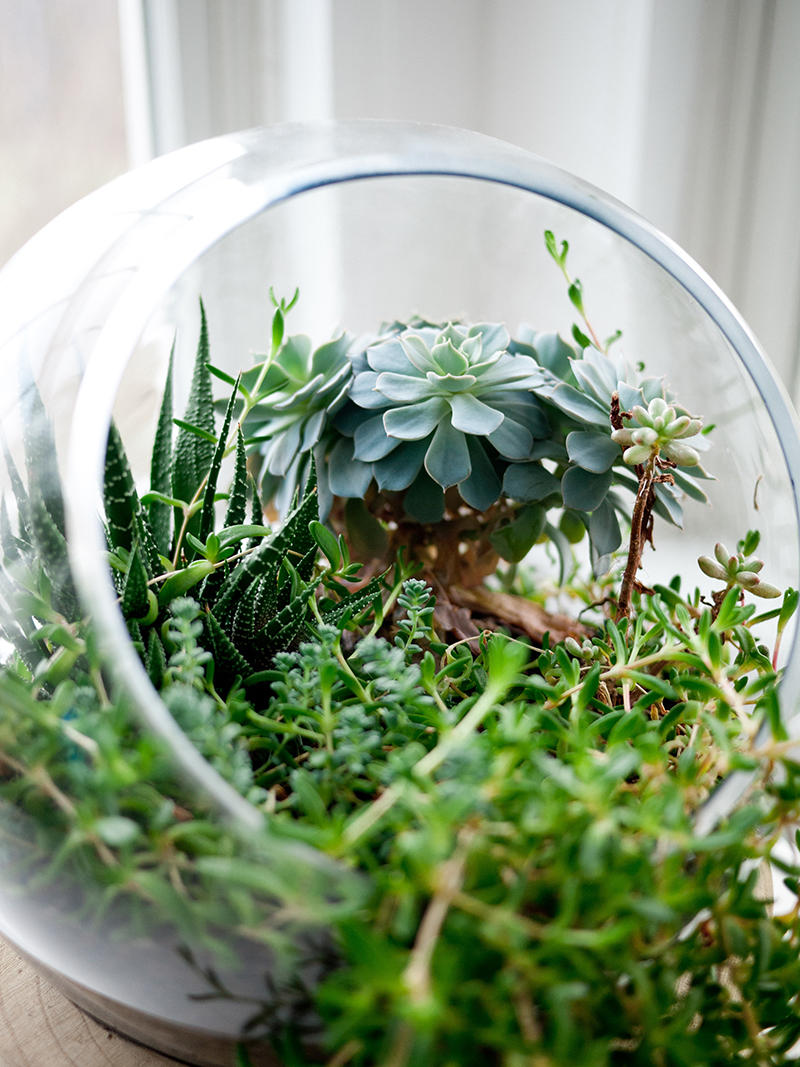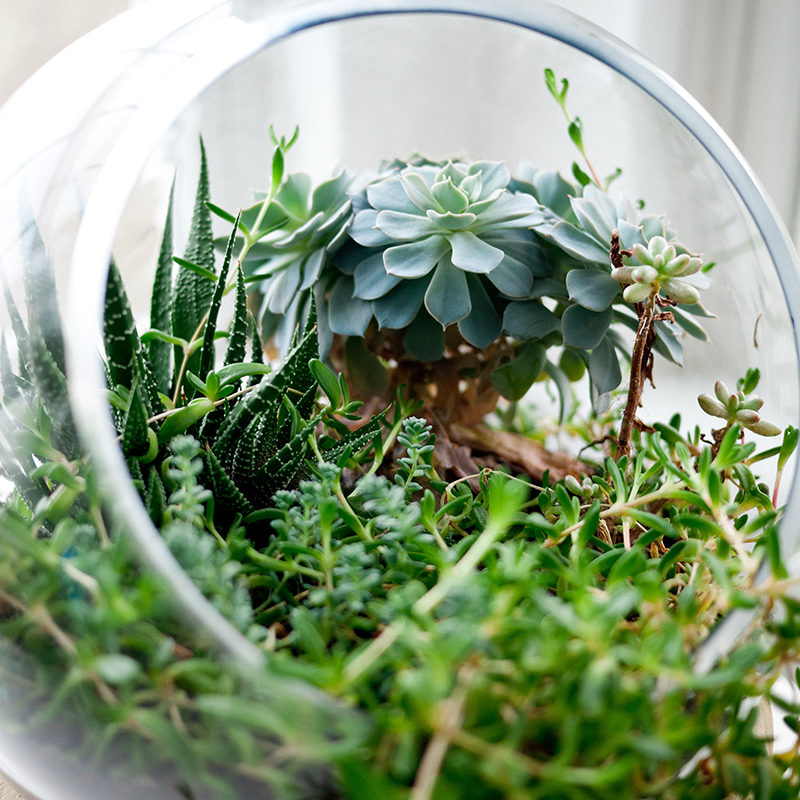Are you looking for a unique last-minute gift for the holidays? If your recipient loves plants but has a black thumb, a terrarium may be the perfect gift.
Terrariums are like tiny, desktop greenhouses. The plants grow and change as time goes by, making it a holiday gift that your friend or family member can enjoy all year. You can make terrariums as personal as you want, and even better, as inexpensive as you’d like. All it takes is a little bit of craftiness, plant material and a glass container.
“A terrarium is a great option for people who like the idea of plants, but don’t have the space or time to plant an outdoor garden,” said University of Georgia Trial Gardens Manager Brandon Coker. “It’s a relatively self-contained ecosystem, so a well-put-together terrarium can survive even the most distracted plant punisher.”
Here are Coker’s recommendations for making a glass terrarium whose plants will thrive.
First, purchase or gather the necessary supplies, which include:
Glass container. You can splurge on an ornate glass vessel, pick one up at the thrift store, which tends to have a plethora of unique containers, or use an old jar. Whether the terrarium is open or closed will depend on your plant selection.
Activated charcoal. This is available at most hardware stores or in the aquarium section of pet stores. “Activated charcoal pulls all the unwanted smells and toxins out of the environment. Much like our soil purifies water before it gets into aquifers in the ground,” Coker said.
Potting soil.
Gravel or small pebbles.
Small trinkets. This is optional, but you can use small figurines or toys, marbles, stones or anything else you can imagine to decorate the inside of the terrarium.
Plants, of course! Lots of nurseries sell tiny plants just the right size for terrariums, or they can be ordered online. Remember, the plants will grow larger, so err on the small side. A word of caution: Avoid succulents, as they need excellent drainage to survive, which is very difficult to maintain in terrariums.
The following is a list of plants that perform well in terrariums, according to UGA Cooperative Extension experts:
Tropical plants – arrowhead, creeping fig, coral berry, Chinese evergreen, English ivy, parlor palm and strawberry begonia.
Woodland plants – asparagus fern, mimosa, Norfolk pine, rattlesnake plantain, pellionia, bird’s nest fern and club moss.
Desert plants – ball cactus, cob cactus, Easter lily cactus, peanut cactus, prickly pear, star cactus, aloe and agave.
Once you have collected all of the supplies, follow these directions to create your terrarium:
- Fill the bottom of your glass vessel with gravel or pebbles. Be generous! About 1.5 to 2 inches should be sufficient for drainage.
- Next, add a layer of activated charcoal — enough to thoroughly cover the gravel. Don’t skip this step! “Activated charcoal is a must for a healthy terrarium,” said Coker.
- Then, gently and carefully add soil. If you have any organic matter you’d like to add, such as peat moss, be sure to mix it with the soil before adding it to the container. Remember to leave room for the plants to fit too. Start by adding a little less soil than you think you might need.
- Add plants the way you would when gardening on a larger scale. Remove the excess soil and fluff out the roots if they’ve become potbound. Then, place plants in the terrarium and make sure all ofthe roots are covered. Add extra soil, if needed.
- As a final touch, add pebbles or moss as a top dressing. Then, place small, decorative objects inside. Be creative! Almost anything can be repurposed to add flair.
- Remove any dirt from the inside walls of the terrarium for a clean look.
- Lastly, give your new terrarium a few sprays of mist. Remember, there are no drainage holes, so there should be barely any water to seep through the soil to the bottom layer. Misting is best because it will evenly water the soil and is the easiest way to control the water.
To learn more about the Trial Gardens at UGA, visit ugatrial.hort.uga.edu/.








